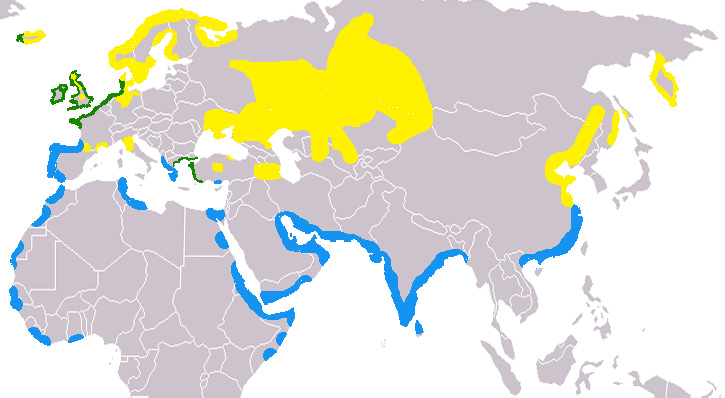
Description de l'animal
The Eurasian oystercatcher, scientifically known as Haematopus ostralegus, is a striking and robust bird that belongs to the oystercatcher family. This species is notable for its large size, distinctive black and white plumage, and long, bright orange-red bill, which it skillfully uses to pry open molluscs, its primary food source. The Eurasian oystercatcher is a bird of coastal areas, frequenting sandy shores, mudflats, and estuaries across Europe, parts of Asia, and North Africa. It is a bird that has adapted remarkably well to life at the water's edge, showcasing unique behaviors and adaptations that make it a fascinating subject of study.Adult Eurasian oystercatchers typically measure about 40-45 cm in length, with a wingspan ranging from 80 to 85 cm, making them one of the larger species within the oystercatcher family. Their striking black and white plumage serves as excellent camouflage against predators when they stand still against rocky shores or sandy beaches. The birds have a distinctive white stripe running down their wings and back, which is particularly visible during flight. Their legs are long and pinkish, enabling them to navigate through muddy flats with ease.
One of the most notable features of the Eurasian oystercatcher is its long, chisel-like bill. The color and shape of the bill are not just for show; they play a crucial role in the bird's feeding habits. Oystercatchers are known for their ability to feed on a variety of marine invertebrates, including mussels, cockles, and worms. They are particularly adept at using their bills to expertly open oysters and other bivalves, a skill that gives the bird its name. The technique involves either stabbing between the shell valves to sever the muscle that holds them together or hammering at the shell to break it open.
The breeding habits of the Eurasian oystercatcher are equally fascinating. They are territorial birds during the breeding season, often returning to the same nesting site year after year. Nests are typically simple scrapes in the ground, located on high ground away from the reach of high tides. The female lays 2-4 eggs, which both parents then incubate. The chicks are precocial, meaning they are relatively mature and mobile from the moment of hatching. However, they still rely on their parents for food and protection for several weeks until they are ready to fend for themselves.
Eurasian oystercatchers are also known for their loud and piercing calls, which can be heard over long distances. These calls are used for a variety of purposes, including mating rituals, signaling danger, and communicating with their chicks. The birds are sociable outside of the breeding season, often forming large flocks which can be seen roosting and feeding together.
In recent years, the Eurasian oystercatcher has faced several challenges, including habitat loss due to coastal development and changes in marine environments. Despite these challenges, the species remains widespread and is not currently considered endangered. Conservation efforts are ongoing to ensure the preservation of their habitats and food sources.
In summary, the Eurasian oystercatcher is a captivating and resilient bird that embodies the beauty and diversity of coastal ecosystems. Its distinctive appearance, intriguing feeding habits, and complex social behaviors make it a subject of great interest not only to ornithologists but also to anyone fascinated by the natural world.
Carte de répartition

Nouvelles photos d'animaux
Top 10 des animaux
- Dolphin gull (Leucophaeus scoresbii)
- Diana monkey (Cercopithecus diana)
- Moustached guenon (Cercopithecus cephus)
- Galápagos tortoise (Geochelone nigra complex)
- Russian tortoise (Testudo horsfieldii)
- Japanese macaque (Macaca fuscata)
- Stone loach (Barbatula barbatula)
- Greek tortoise (Testudo graeca)
- Common flying dragon (Draco volans)
- Colossal squid (Mesonychoteuthis hamiltoni)